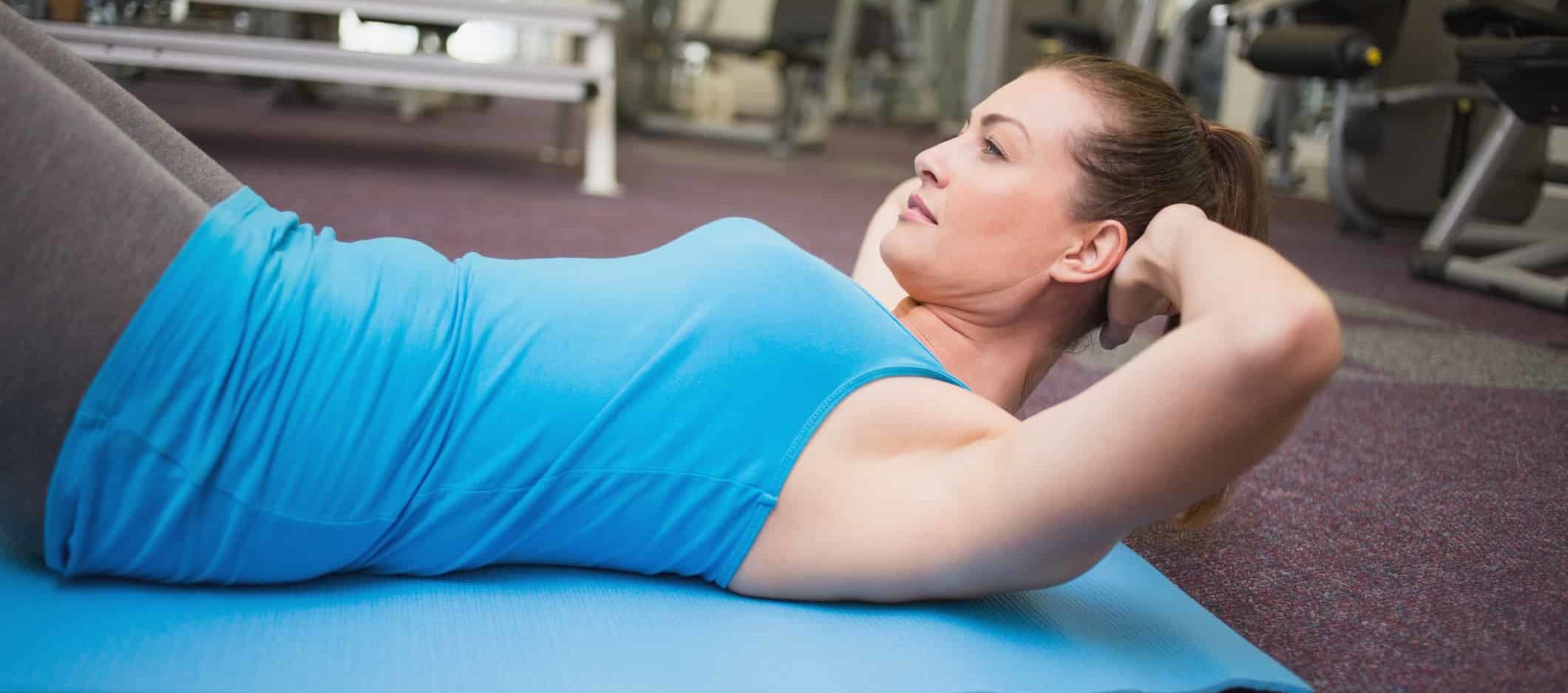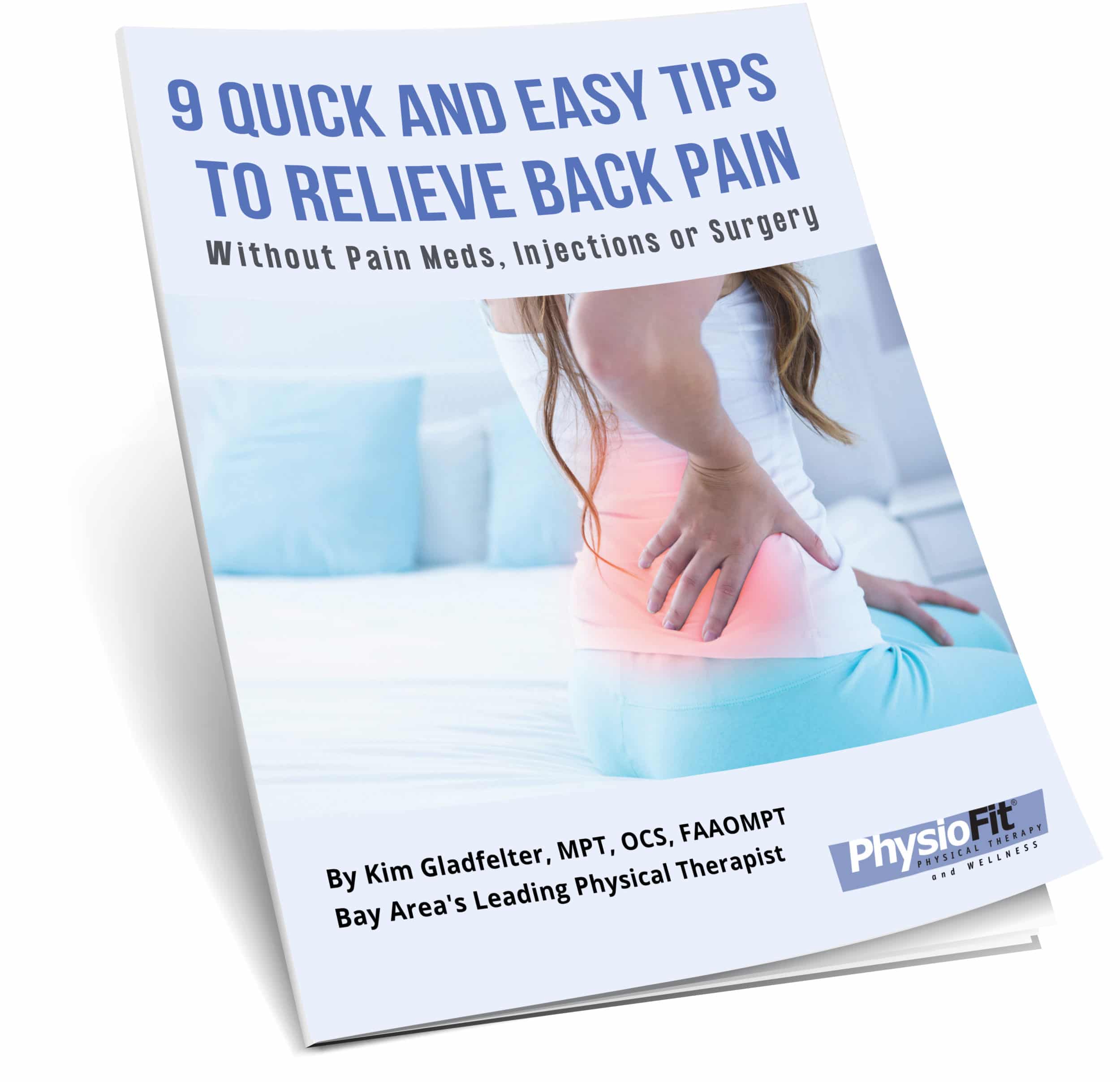
A lady emailed the clinic the other day and asked:
“I get low back pain during sit-ups. Am I doing something wrong, or should I avoid them?”
Great question! I’m glad this lady asked because this time of year, as people begin to prepare for the winter months, we see a big rise in the number of people suffering from back pain.
And even though sit-ups are one of the most common go-to exercises to get your “abs ready” – are they really that effective? And more importantly, can this exercise cause back pain?…
If you’ve ever tried to do an ab workout and realized halfway through that your back is feeling things it shouldn’t be feeling, you’re not alone.
For me (and for many of our patients) it’s any ab exercise that asks me to sit upon my tailbone and move my legs that causes a slight twinge in my back.
Which is frustrating when you want to keep active but can’t because your back is in pain!
To understand why this happens, you first have to remember that the abs and lower back are part of your core.
While we often think of our core as being our abs – the abs are only one part of the equation!
Your core is made up of a group of muscles that work together to support the body. It wraps around the entire body and includes muscles that are in your lower back too.
When you do any exercises for the core, you’re impacting all of the other parts that make up your core too – including your lower back.
Lower-back pain during any exercise involving your core is usually a sign that your core is too weak to do that exercise.
So, why does this happen?
Well, if your lower back isn’t strong enough, the core exercises you’re doing with all the right intentions, may just be asking too much of your back causing the muscles to strain. Alternatively, if you have a weakness anywhere else in your body, your lower back may overcompensate by taking on more than it can handle.
But pain during exercise doesn’t always mean your back or core is weak– nope, pain in your back can also be a sign that the way you perform the exercise needs tweaking.
For many abdominal exercises, a small misstep in how you perform the exercise can put pressure on your back, as the spine gets irritated each time you move into a position that isn’t correct.
One of the most common mistakes we see people make when performing these types of exercises is ‘hyperextension’ (this is when your hips aren’t tucked under causing a curve in the spine). If you can focus on keeping your tailbone (hips) tucked under, drawing your belly button towards the spine, this will help alleviate back pain and prevent it from getting worse.
Another helpful tip to keep in mind is to remember that the lower back needs to remain ‘glued’ to the floor for the majority of exercises involving the abdominals.
When your back comes off the floor, your back is in a vulnerable position.
So before you progress with any core exercise, make sure you can perform them with your back flat on the floor first – that way you’ll protect yourself from back pain and you’ll be strengthening your back at the same time.
Not only a weak core but muscle tightness and fatigue can also lead to poor form and lower back pain too…
If your glutes and hips are really tight, chances are you’ll feel the strain in your back during your daily activities, not just exercise.
As well as tightness, when you’re tired, your muscles stop functioning properly and your body will look for nearby muscle groups to compensate – most of the time the lower back and hips are the ones that take the strain!
So, what can you do to stop back pain from getting in the way? First off, stop doing any movements that cause you pain. Any pain is your body’s way of telling you to stop what you’re doing no matter what. Basically, if it doesn’t feel good, don’t do it!
However, the good news is that there are plenty of simple ways you can strengthen your core without straining your back.
Exercises like dead bugs, glute bridges, and planks, (so long as you perform them with your hips tucked under with your core and glutes engaged), are all great examples of movements that will help strengthen your back and entire core along with decreasing your chances of getting any injuries.
To get familiar with the feeling of planting your lower back on the ground:
- Lay on your back with your legs in the air, squeezing a block or tennis ball between your legs. Try to flatten your low back to the ground.
- Slowly start to lower your legs, squeezing around the block/tennis ball (a slight bend of the knees is fine).
- Just before you feel your low back try to lift off of the ground, squeeze the block, push the low back toward the ground underneath you, and take three deep breaths.
- Then slowly raise your legs back up to the starting position.
There are so many non-ab-specific exercises that can give you a “sneaky” core workout – lunges, kettlebell swings, and body-weight squats. Adding them to your routine will help you gain core strength without ever having to do a crunch or twist, so you can work on your essential core strength while hitting other big muscle groups at the same time.
To conclude – sit-ups aren’t bad for you when performed correctly. Just make sure you have a strong enough core without your back coming off of the floor until you progress to being able to perform them safely.
For more tips like this to help you or a loved one ease low back pain, here’s a free guide to help you keep active with less back pain – just click the link to get your free copy instantly: https://physiofitpt.com/back-pain/
Free Guide: “9 Quick And Easy Tips To Relieve Back Pain
Without Pain Meds, Injections, or Surgery.”
 ABOUT THE AUTHOR
ABOUT THE AUTHOR
Kim Gladfelter, MPT, OCS, FAAOMPT
Women's Health Physical Therapy Specialist at PhysioFit Physical Therapy & Wellness
Kim Gladfelter is a physical therapist, Pilates instructor, educator, author, and co-founder of PhysioFit Physical Therapy & Wellness. She is known as a keen, well-rounded expert of healing through movement and women’s health specialist in the Silicon Valley area.
Kim has helped men and women of all ages to stay active and feel their best. She also writes about managing pain in her health columns, blogs and the local Los Altos Town Crier newspaper as well as reaches out to the local community, support groups, schools, libraries, and sports centers to advise and educate on body awareness and therapeutic exercise.
 ABOUT THE AUTHOR
ABOUT THE AUTHOR
Kim Gladfelter, MPT, OCS, FAAOMPT
Women's Health Physical Therapy Specialist at PhysioFit Physical Therapy & Wellness
Kim Gladfelter is a physical therapist, Pilates instructor, educator, author, and co-founder of PhysioFit Physical Therapy & Wellness. She is known as a keen, well-rounded expert of healing through movement and women’s health specialist in the Silicon Valley area.
Kim has helped men and women of all ages to stay active and feel their best. She also writes about managing pain in her health columns, blogs and the local Los Altos Town Crier newspaper as well as reaches out to the local community, support groups, schools, libraries, and sports centers to advise and educate on body awareness and therapeutic exercise.

 Los Altos, CA
Los Altos, CA

